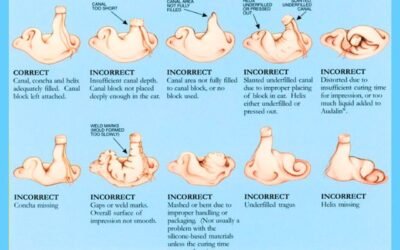Concept of Phonetically and Phonemically Balanced: Phonetically and Phonemically balanced words are use in specific lists, which are used in measuring the speech detection thresholds and speech reception threshold. Phonetically and Phonemically balanced words both are monosyllabic words.
Phonetically balanced
- Phonetic balance means that the relative frequencies of the phonemes on the test list are as close as possible to the distribution of speech sounds used in English, which was in turn based on Dewey’s (1923) analysis of 100,000 words in newsprint.
- Original attempts at speech-recognition testing (Egan, 1948) involved compiling lists of words that are phonetically balanced (PB), that is, lists that contain all the phonetic elements of connected English discourse in their normal proportion to one another.
- These word lists are called phonetically balanced because the phonetic composition of all lists are equivalent and representative of everyday English speech.
Phonetically balanced (PB) word lists
- Lists of monosyllabic words used for determining word-recognition scores. Theoretically, each list contains the same distribution of phonemes that occurs in connected English discourse.
- His original pool of 1,000 words was divided into 20 lists of 50 words, which collectively are known as the PAL PB-50 word lists.
- Each list was considered to be phonetically balanced such that the 50 words that composed a list were a proportionally correct representation of the phonetic elements in English discourse.
Phonemically Balanced
- Phonemically balanced, a concept they judged to be more realistic than phonetic balancing. Each monosyllabic word contained a consonant, followed by a vowel or diphthong, followed by another consonant. These were called consonant-nucleus-consonant (CNC) words.
- Lehiste and Peterson (1959) modified the concept of phonetic balance to one of phonemic balance in recognition of the fact that speech recognition is accomplished on a phonemic rather than a phonetic basis. This is a real distinction because phonemes are actually groups of speech sounds (each of which is a phonetic element) that are classified as being the same by native speakers of the language. Thus, all phonetic differences are not phonemically relevant.
- For example, phonetically different variants of the phoneme /p/ (allophones of /p/) are identified as /p/ even though they vary in terms of their articulatory and acoustic (i.e., phonetic) characteristics in different speech sound contexts (e.g., /p/ as in /pat/ versus /pit/, or initially versus finally as in /pεp/) and from production to production.
Phonemically Balanced word list
- Lehiste and Peterson (1959) devised lists of CNCs (consonant–syllable nucleus [vowel]–consonant) that were phonemically balanced versus phonetically balanced.
- That is, lists that were developed to be phonetically balanced did not take into account the position of the sound in a word and how the acoustic realization of the sound would be affected by coarticulatory factors.
- Lehiste and Peterson argued that phonemic balancing could be accomplished by allowing for the frequency of occurrence of each initial consonant, vowel nucleus, and final consonant to be similar across CNC word lists.
- The Lehiste and Peterson lists were condensed into four lists of 50 words known today as the NU No. 6.
References:
⇒ Essentials of Audiology – Stanley A. Gelfand, PhD (Book)
⇒ Handbook of Clinical Audiology – JACK KATZ, Ph.D. (Book)
⇒ Introduction to Audiology – Frederick N.Martin (Book)
⇒ Audiology: The Fundamentals – FRED H. BESS, PhD (Book)
You are reading about:
Concept of Phonetically and Phonemically Balanced




Test materials available in various languages?